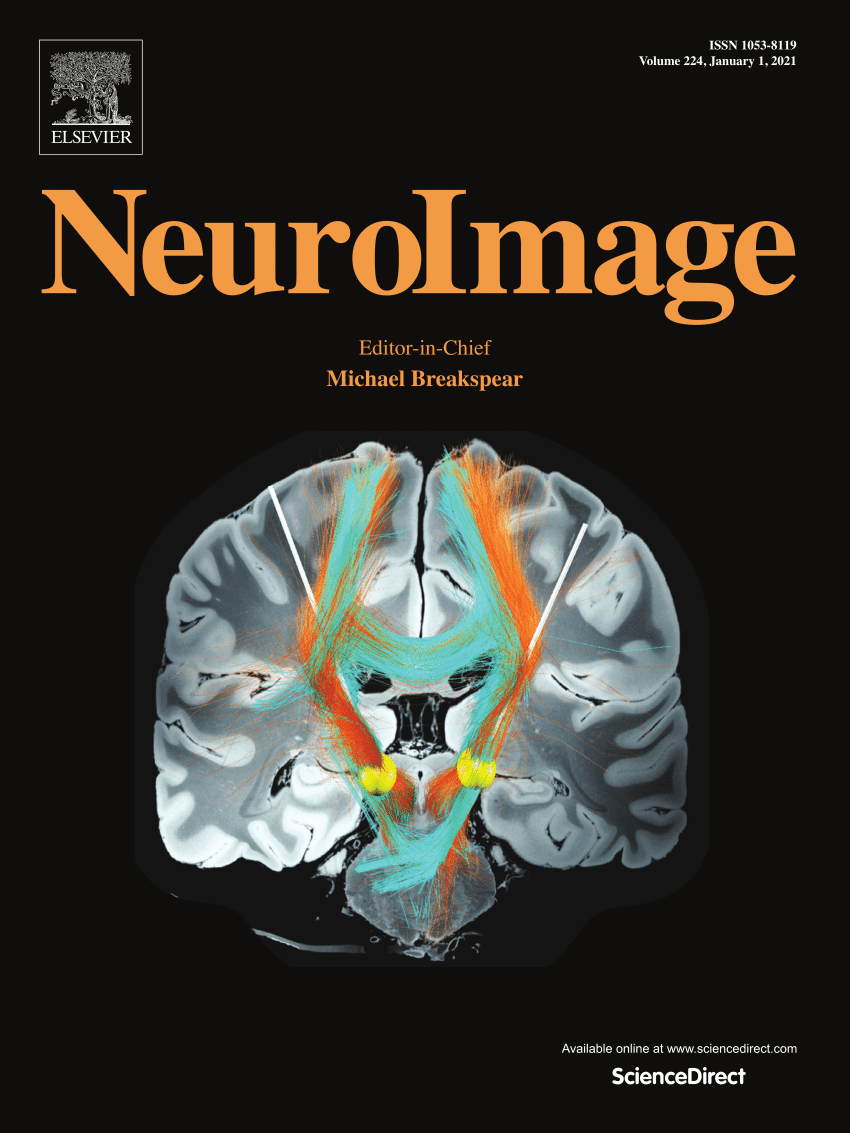所谓的性别特异性人体气味化合物的神经表征。
IF 4.7
2区 医学
Q1 NEUROIMAGING
引用次数: 0
摘要
体臭在非语言交流中扮演着重要的角色,尤其是在一个人的吸引力方面。然而,他们的中央处理仍然没有得到充分的探索,特别是作为性别的功能。本研究旨在确定涉及处理两种据称具有性别特异性的人体气味化合物(3-羟基-3-甲基己酸,HMHA和3-甲基-3-巯基己烷-1-醇,MSH)的神经网络。我们假设:1)这些体味会被不同的大脑区域处理,而非身体气味;2)它们在吸引力方面的作用,如果有的话,将通过特定区域的激活以及男性和女性不同的语言和神经生理反应来表明。30名参与者(15名男性,15名女性)进行了功能性磁共振成像(fMRI),在此期间,他们对HMHA, MSH和5种非身体气味的吸引力进行了评估。在会议结束时,参与者根据多个感知尺度对所有气味进行评级。HMHA激活视觉(纹状体区和枕回)而不是嗅觉脑区。男性认为HMHA比女性更男性化,并且在上额回和内侧额回表现出更大的神经活动,而女性对这种气味的反应明显比男性更多地激活了额下回。MSH与其他非体臭一样被处理,不受性别差异的影响。结果表明,HMHA(而不是MSH)承担了特定的社会信息,导致主要嗅觉网络之外的神经处理。尽管我们的研究结果并没有提供明确的证据来支持一个人的吸引力与之相关,但男性和女性对它的处理方式也是不同的。本文章由计算机程序翻译,如有差异,请以英文原文为准。
Neural representation of allegedly sex-specific human body odor compounds
Body odors play an important role in nonverbal communication, and particularly in one's attractiveness. However, their central processing remains underexplored, especially as a function of gender. This study aims at identifying the neural networks involved in the processing of two allegedly sex-specific human body odor compounds (3-hydroxy-3-methylhexanoic acid, HMHA, and 3-methyl-3-sulfanylhexan-1-ol, MSH). We hypothesized that i) these body odors would be processed by different brain regions than non-body odors, and that ii) their role in attractiveness, if any, would be indicated by the activation of specific regions and by differential verbal and neurophysiological responses in men and women. Thirty participants (15 men, 15 women) performed a functional Magnetic Resonance Imaging (fMRI) session during which they rated the attractiveness of HMHA, MSH, and 5 non-body odorants. At the end of the session, participants rated all odors on multiple perceptual scales. HMHA activated visual (striate area and occipital gyrus) rather than olfactory brain regions. Men rated HMHA as more masculine than women did, and presented greater neural activity in the superior and medial frontal gyri while women activated the inferior frontal gyrus significantly more than men in response to this odor. MSH was processed as the other non-body odors, and not subject to gender differences. The results suggest that HMHA (not MSH) bears specific social information, resulting in a neural processing outside the main olfactory network. It is also processed differently in men and women, although our findings do not provide clear evidence in favor of relevance for one's attractiveness.
求助全文
通过发布文献求助,成功后即可免费获取论文全文。
去求助
来源期刊

NeuroImage
医学-核医学
CiteScore
11.30
自引率
10.50%
发文量
809
审稿时长
63 days
期刊介绍:
NeuroImage, a Journal of Brain Function provides a vehicle for communicating important advances in acquiring, analyzing, and modelling neuroimaging data and in applying these techniques to the study of structure-function and brain-behavior relationships. Though the emphasis is on the macroscopic level of human brain organization, meso-and microscopic neuroimaging across all species will be considered if informative for understanding the aforementioned relationships.
 求助内容:
求助内容: 应助结果提醒方式:
应助结果提醒方式:


